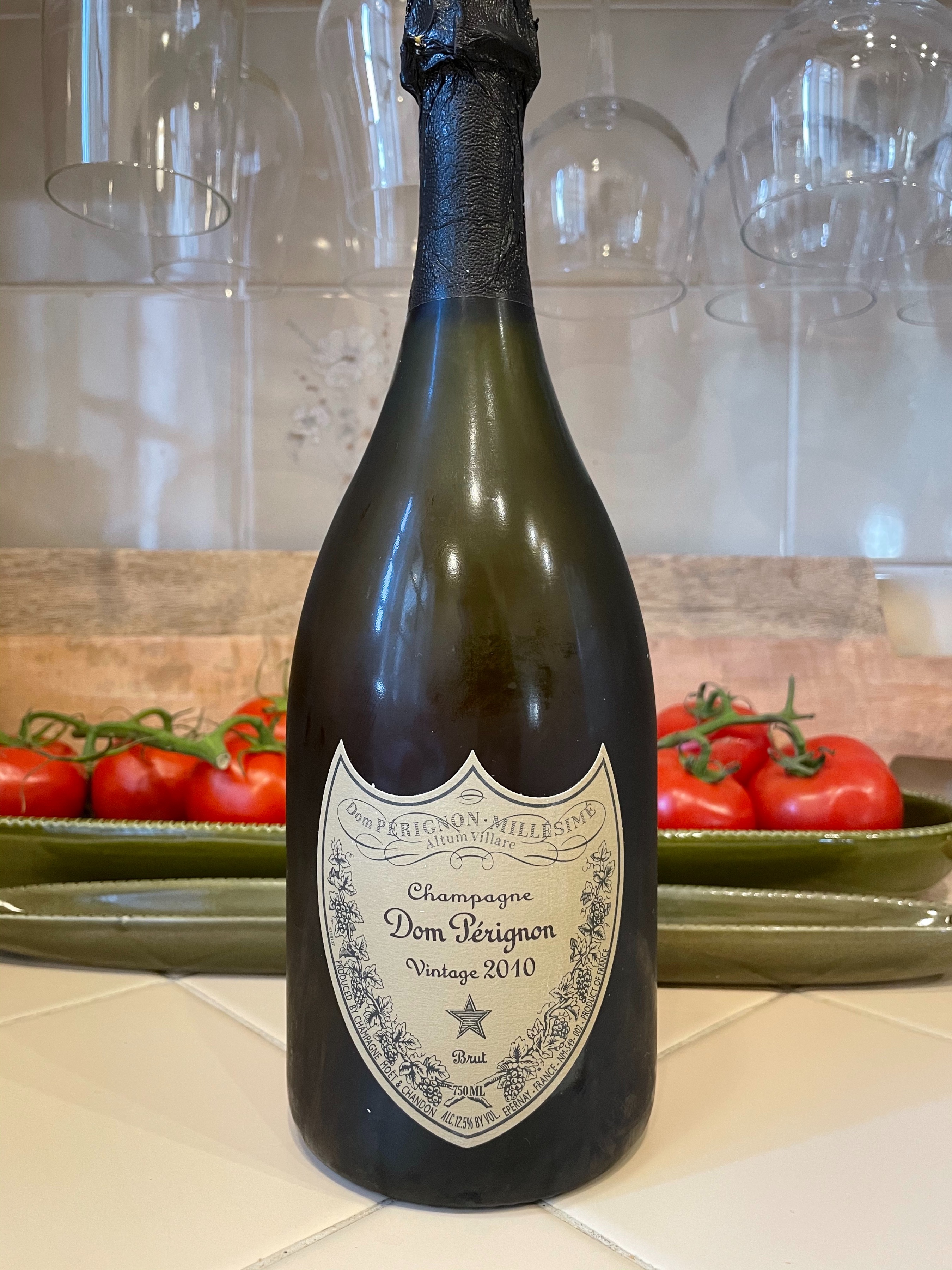Some recent kudos for this release have suggested it is as being much preferred over the 08 Taittinger Comtes de Champagne and a taste off should happen. Well, IMHO, there’s really no resemblance as the 08 Comtes is really a huge bubbly with lots of power and right now, very short on finesse.
The 10 Dom is the antithesis to the 08 Comtes in that it exudes grace and charm with a really subtle and very mild profile compared to what I usually find in vintage DP. Here’s my notes regarding the first bottle I’ve sampled:
2010 DOM PERIGNON- 54% Chardonnay, 46% Pinot Noir and the announced but not verified disgorgement date of 2/19 with a dosage of 5gpl; the nose had distinct honeysuckle, lemongrass, minerals and lime which continued on to be joined by ginger, spice and honeydew melon on the palate; the mousse is light and just a bit frothy and its medium bodied at best with medium weight as well; in time and a few degrees warmer, it became just a bit bigger with more complexity, body and balance, but it never really got to that stately Dom Perignon status that I’ve enjoyed over all of the years and anticipated with this one; for me, it didnt have the amount of acidity, spiciness, creaminess and richness I expect and since it’s so young, the toasty notes have yet to evolve from the browning effect/ Maillard reaction. This latter point is true of the 08 Comtes as well. Another difference between the two is the lesser amount of citrus notes, especially the lemon and lime that I so often find so pronounced. At this stage, at least for this bottle, it’s a weak sister to other vintage Dom and perhaps just needing time to mature and express, but I question if it will ever approach say the 06 or 02 or ……
I keep referring to this being just my humble opinion as some others who I greatly respect and considers mentors have suggested the 10 DP to be far preferred. From the 1 bottle sampling of each Ive had, I go with the Comtes and it’s not even close. Yes, both need lots of time, but the Comtes has so much more going for it to reach the higher plateau.
Cheers,
Blake

